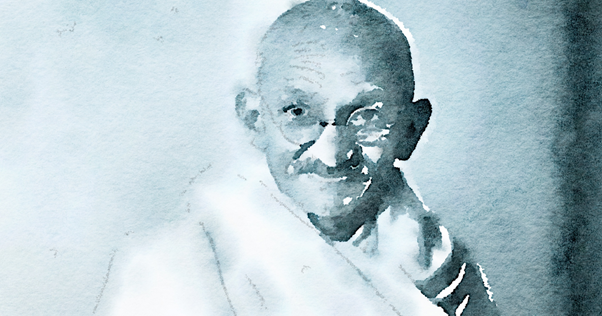
Independence, every teenager’s cry, to be free from parental control. Under normal circumstances this is really not a desired outcome but in the case of abuse one might be willing to accommodate Independence. These were abnormal circumstances for Indians and that is why an independence struggle seemed perfectly in place. We were coerced into becoming children of the Raj. But Indians wondered whether the Raj really considered them their own?
Queen, the band, sang I want to break free. I want to break free. I want to break free from your lies. You’re so self-satisfied and I don’t need you. I’ve got to break free. God Knows, God knows I want to break free.
Some argued that freedom from the British Raj was understandable. However, the then celebrated British Prime Minister, Winston Churchill, was concerned, like any good parent would, that we were incapable of handling our freedom, but many good Indian children realised that our well-being was not really their concern. They were our adoptive parents who adopted us only because there was a goldmine to be exploited.
With views like this festering in the background, Indians were left with two choices.
THE SEPOY MUTINY
The first was a violent attempt towards independence famously known as the Sepoy Mutiny. These reactions were
triggered by harsh land tax reforms that made it impossible for Indian farmers to make a living. A few thought the social reforms of the East India Company affected religion and caste purity. Then there were suspicious rumours that bullets were greased with cow and pig fat. All this and more put together led to a violent blood bath resulting in a heavy toll of civilian casualty on both sides of the Indian and British camps.
Gandhi wanted a moral transformation but where do we go to achieve this? Who do we turn to? If we turn within we are devastated by what we are capable of thinking, saying and doing to each other
This event was not an all Indian phenomenon. Except for a few states, no one else really participated in the violence. Yet it sent a strong message to Britain. Something had to be done to quench this rebellion. Thus the Queen declared on paper that Indians be treated on par with her British subjects.
However, in reality this was a promise that was never quite fulfilled. This is led to resentment and resentment led to hate and hate led to the possibility of violence and bloodshed. With unrestrained violence looming large would we be ready for freedom?
THE GANDHIAN REVOLUTION
The second option for Freedom was Gandhi. Gandhi entered the scene like an alien to both the British and the Indian. He offered a new strategy of rebellion. A radically new path to freedom, never before attempted politically in the history of India. His solution was Non-violence. With the rise of communism and radical violence as the only option, Gandhi was like the mad man who sat still in the middle of it all and was unwilling to budge. He is the child who was willing to give a flower in exchange for a bullet. He became the child that both the Indian and the British could adopt.
He welcomed the pacifist and made them violent enough to retaliate in the salt March. He welcomed the violent and channelled their violence into courage to face the bullets of the Jallianwala Bagh Massacre. Gandhi said,
“The bravery of the revolutionaries was beyond question, but it had failed to instil courage in the mind of the common man. But although the non-violence of the past twenty-five years has been of an indifferent quality, yet nobody could deny that it had succeeded in elevating the character of the whole nation to a certain extent.”
This was a new and radical way of fighting the enemy. It was so unexpected that there was no choice but to accept it. The first option of violence was not going to result in a peaceful India. The end of many a bloody rebellion has been the beginning of many other bloody rebellions. Whereas Gandhi was interested in transforming the moral framework of the Indian. He wanted them to succeed, not with brute force, but with moral character. The British Raj eventually gave in, his non-violence put their violence to shame!
THE CURRENT OPTION
Where are we today? What can we say of the Indian moral character? While we do have exceptional moral examples yet there are many stories of rape, violation of the most innocent, the beefing up of cow vigilantes, corruption, religious and caste suspicions. Have we betrayed Gandhi? Well let’s forget
Gandhi momentarily, have we betrayed ourselves? While it is understandable that we wanted freedom from the British can we be free from ourselves? Gandhi wanted a moral transformation but where do we go to achieve this? Who do we turn to? If we turn within we are devastated by what we are capable of thinking, saying and doing to each other. We should probably look beyond us and into the face of Order. Into the face that said,
“Blessed are the poor in spirit, for theirs is the kingdom of heaven. Blessed are those who mourn, for they shall be comforted. Blessed are the meek, for they shall inherit the earth. Blessed are those who hunger and thirst for righteousness, for they shall be satisfied. Blessed are the merciful, for they shall receive mercy. Blessed are the pure in heart, for they shall see God. Blessed are the peacemakers, for they shall be called sons of God. Blessed are those who are persecuted for righteousness’ sake, for theirs is the kingdom of heaven. Blessed are you when others revile you and persecute you and utter all kinds of evil against you falsely on my account. Rejoice and be glad, for your reward is great in heaven…”
In his face we see all of humanity in their beauty, intelligence and love. This image can free us too. Let us rise up to the challenge, and strengthen our virtuous moral character. As Gandhi imagined, let’s put the violence and hate of the coward to shame. Then like him we too can offer the world something worth living for. An alternative story with a good ending! Happy Independence Day!

Daniel Thejus (Bobby) is Speaker and Trainer with RZIM Life Focus Society based at Bengaluru.